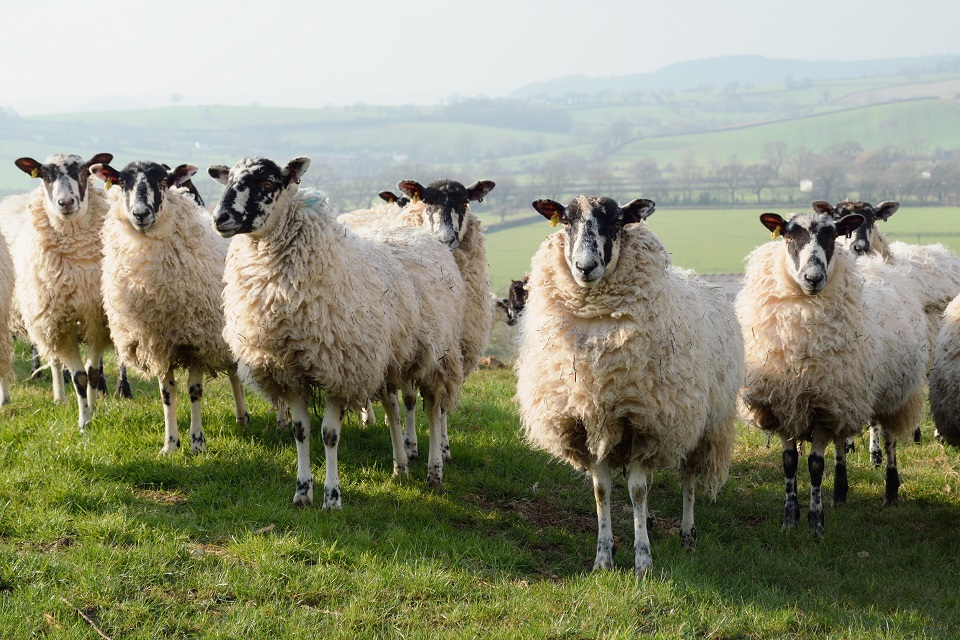This newsletter content was provided by Bimeda, makers of Gold Fleece Sheep Dip, 608 mg/ml Concentrate for Dip Emulsion.


Animal Health Sales Specialist
Sheep scab is estimated to cost the UK sheep sector £78-202 million annually. Historically under control, its incidence has increased exponentially with resultant economic and welfare impacts.
Caused by the Psoroptes ovis mite, which can be transmitted between animals and via the environment on fomites, like clothing and equipment which carry infection. It can survive for up to 17 days in the environment, for example, on wool caught in fences.
Clinical signs
The mites produce faeces eliciting a severe allergic reaction in the sheep host, causing skin lesions and intense itching. While many are familiar with the classic signs of severe ‘scabby lesions’, nibbling and scratching due to intense itching, fewer are familiar with the signs of chronic sheep scab disease and unaware that long-term infections may cause no obvious clinical signs at all.
Biosecurity
Animals which have been repeatedly exposed to sheep scab disease are likely to have developed an immune response. This immunity will not eradicate disease and will not prevent transmission but will dampen or even prevent obvious clinical signs. All new incoming stock should be considered at risk.
Diagnosis
Skin scraping has been widely used for diagnosis and offers a quick, cost-effective solution. Your veterinary surgeon can carry out a skin scrape and deliver results rapidly, facilitating ongoing management.
Even where infestation is present, mites may not be detected on skin scrapes, particularly if low mite numbers are present. Moredun has developed a sheep scab (blood) ELISA test, which is available commercially via Biobest Laboratories and Wales Veterinary Science Centre. It detects the presence of antibodies produced by the sheep following infection.
Treatment & management
If sheep scab is diagnosed, engage with your vet or RAMA (SQP) to discuss treatment options. Currently, two treatment groups are available, plunge dipping with organophosphate dip or injecting with Macrocyclic Lactones (group 3 clear warmers). When determining which approach to take, consider and discuss the following with the prescriber:
- How will different treatments impact my roundworm control plan?
- Is clean housing and pasture available, or is a product which prevents reinfection required?
- What is the administration protocol, and can it be facilitated?
- How will the withdrawal impact management, e.g. drawing lambs?
- For dipping, is there an ‘Award in the Safe Use of Sheep Dip’ held and a responsible disposal method in place (according to the local environmental agency). If not, could a mobile dipping contractor be utilised?
- How has scab likely to have been introduced, and who do we need to inform that may also be affected, e.g. neighbours?
Due to the different protocols (1 injection vs 2), different routes of administration (subcutaneous vs intramuscular) and prevention vs treatment only products, it is easy to make mistakes which can result in treatment failure. Double-check before administering that they are being used correctly.
Diazinon has been used in showers/jetters; however, the product is not licensed for this use, and there are numerous concerns, including:
- The ability of mites to survive in ear canals facilitating reinfection.
- Dip concentration in fleeces following showering has been demonstrated as significantly lower in trial work vs plunge dipping which could result in treatment failure and a reduced duration of protection.
- Exposure of mites to sub-lethal concentrations may lead to resistance.
- Harmful aerosol generated may increase the risk of inhalation.
- Medicines must only be used in accordance with their licenced use.

For more information contact your local Agrii Animal Health Advisor or David Pryce on 01584 872134
1 The high cost of sheep scab. Emily J Nixon,Richard Wall,Hannah Rose Vineer,Lesley Stubbings. Vet Record, 2020.
2 Do not use in animals vaccinated against footrot
3 M. H. Clear, P.R. Kettle & T. J. Hynes (1982) Retention of diazinon in wool on Romney and Drysdale sheep and in hair on goats, New Zealand Journal of Experimental Agriculture, 10:1, 19-21, DOI: 10.1080/03015521.1982.104278


